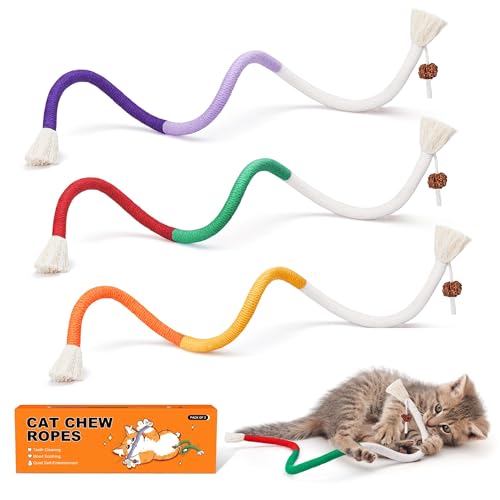Living with a cat can be a joy, but let’s face it—cat hair seems to have a magical ability to find its way into every corner of our homes. Whether you’re a proud cat parent or sharing your space with someone who is, managing that fluffy fallout can feel like a never-ending battle. But don’t worry; you’re not alone in this!

I’ve learned a few tricks along the way that make dealing with cat hair a little less daunting. From smart cleaning hacks to clever organizational tips, there are plenty of ways to keep your home looking and feeling fresh. Let’s dive into some simple strategies that’ll help you reclaim your space while keeping your feline friend happy and comfortable.
Understanding Cat Hair and Its Impact
Cat hair can be a constant presence in our homes. Knowing where it comes from and how it affects us helps manage it better.
Common Sources of Cat Hair
Cats shed hair throughout the year. Shedding is a normal part of their grooming process. Common sources of cat hair in my home include:
- Furniture: Sofas and chairs collect hair quickly. Regularly vacuuming these helps.
- Carpets: Low-pile carpets trap hair well. Using a lint roller works wonders.
- Clothes: Fabric attracts hair easily. Keeping a sticky roller nearby is handy.
- Bedding: Cats love cozy spots. Washing blankets and bed covers often reduces buildup.
- Air Vents: Hair can circulate through air systems. Cleaning vents and filters regularly helps keep air clear.
Allergies and Sensitivities
Some people react to cat hair. Allergies can be frustrating. They occur when proteins from cat saliva, skin, and urine spread with shed hair. Symptoms may include sneezing, itching, or watering eyes.
To manage these sensitivities:
- Clean Regularly: Frequent vacuuming and dusting reduce allergens.
- Create Cat-Free Zones: Designate areas where cats aren’t allowed, like bedrooms.
- Use HEPA Filters: Air purifiers with HEPA filters trap airborne allergens.
- Groom Your Cat: Regular brushing helps reduce loose hair. I find that grooming sessions also deepen my bond with my cat.
Managing cat hair makes sharing a home with these loving pets easier.
Tips for Managing Cat Hair
Cat hair can be a challenge, but with a few strategies, it’s easy to keep it under control. Here are effective tips to manage cat hair in your home.
Regular Grooming Practices
Regular grooming makes a big difference. I brush my cat at least twice a week. This helps remove loose hair before it falls onto furniture and floors. Some cats may not enjoy grooming. Start slowly and use treats to create a positive experience. For long-haired breeds, daily grooming helps to keep mats and tangles at bay.
Choosing the Right Tools and Products
Choosing the right tools simplifies the grooming process. A slicker brush works well for most cats. It removes loose hair and helps distribute natural oils. A de-shedding tool can also be effective, particularly for heavy shedders. For cleaning, a lint roller or rubber glove makes quick work of removing hair from clothes and surfaces. Consider investing in a good vacuum with a pet hair attachment to tackle floors and furniture effectively.
Cleaning Strategies for Shared Spaces
Cleaning a home with a cat doesn’t have to be overwhelming. I’ve found that establishing a routine makes it easier to manage cat hair in shared spaces. Let’s explore effective cleaning strategies.
Effective Vacuuming Techniques
Vacuuming is crucial in removing cat hair. I recommend using a vacuum designed for pet hair, as it has stronger suction and specialized attachments. Set a specific day each week for vacuuming. Focus on high-shedding areas like carpets and furniture. Run the vacuum slowly over surfaces to capture more hair. Don’t forget to empty the vacuum regularly to maintain performance.
Utilizing Lint Rollers and Sticky Tape
Lint rollers are a lifesaver for quick clean-ups. I keep one in every room for easy access. Simply roll it over surfaces to pick up cat hair in seconds. Sticky tape works as a great alternative when running low on lint rollers. Wrap some tape around your hand, sticky side out, and pat it against fabrics to remove hair. Both methods are quick and effective in maintaining a clean space.
Communication with Housemates
Keeping communication open with housemates is key. Discuss expectations about managing cat hair. Agreeing on cleaning schedules can make a big difference.
Setting Boundaries and Agreements
Set clear boundaries about cat areas. Decide which spaces are cat-friendly and which are off-limits. For instance, my bedroom is a cat-free zone. This way, I avoid extra cat hair on my bed. Agreeing on cat-free areas helps everyone feel comfortable.
Sharing Responsibilities
Sharing cleaning tasks is essential. Create a cleaning schedule that includes everyone. Assign specific tasks, like vacuuming or grooming. I find it easier when everyone pitches in. It also reduces frustration and keeps the home neat. Tools like lint rollers can be kept handy for quick clean-ups. Working together makes managing cat hair less of a chore.
Conclusion
Living with a cat can be a delightful experience but managing cat hair doesn’t have to be a hassle. By incorporating some simple strategies into your routine and communicating with housemates, you can create a comfortable environment for everyone.
Regular grooming and smart cleaning tools make a huge difference. Plus setting boundaries around cat-friendly spaces helps keep the hair situation under control.
With a little effort and teamwork, you can enjoy the companionship of your furry friend while keeping your home clean and cozy. Remember you’re not alone in this journey, and together you can tackle the challenges of cat hair with ease.
















